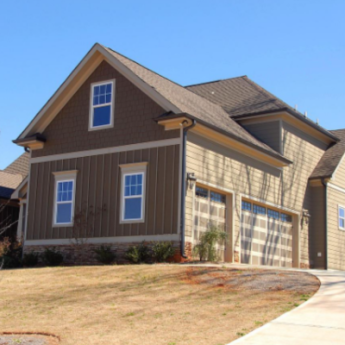The Impact Of Severe Weather on Roofs

Hey there, homeowner! Have you ever wondered how your roof holds up during a storm or what the impact of severe weather on roofs is? We often take our roofs for granted, expecting them to protect us no matter what.
But the truth is severe weather can take a significant toll on even the sturdiest roofs. This blog is all about exploring severe weather phenomena and their impact on your house’s roof.
This would enable you to be more informed and vigilant about the things that you need to do in order to keep the roof of your home safe. Let us get started.
The Types Of Severe Weather That Affect Roofs
Roofs face various challenges depending on the type of weather they encounter. Here’s a rundown of the most common types of severe weather and how they can affect your roof:
Heavy Rain
Heavy rain is the foremost weather condition(s) that can be very damaging or negatively impact the roof of your house. While a well-maintained roof is designed to handle rain, problems can arise if there are existing issues. But that will not be enough to deter the impact of severe weather on roofs
- Leaks: Water can seep through cracks or damaged shingles, leading to leaks inside your home.
- Water Damage: Prolonged exposure to water can cause wood rot, mold, and mildew, weakening the structural integrity of your roof.
- Gutter Overflows: If gutters are clogged, water can overflow, potentially damaging the roof’s edge and causing water to pool around your home’s foundation.
High Winds
Strong winds can be incredibly destructive to roofs. Wind speeds can vary greatly, but even moderate winds can cause damage over time.
- Shingle Damage: High winds can lift and tear shingles, leaving your roof vulnerable to water damage.
- Debris Impact: Wind can carry debris like branches and other objects, which can hit and damage your roof.
- Structural Strain: Continuous exposure to high winds can weaken the overall structure of your roof, leading to long-term damage.
Hailstorms
Hailstorms can be particularly damaging to roofs, as hailstones can vary in size from small pellets to golf ball-sized chunks.
- Shingle Bruising: Hailstones can cause bruises and dents on shingles, compromising their protective layer.
- Granule Loss: Hail can strip away the granules on shingles, reducing their effectiveness and lifespan.
- Cracks and Holes: Larger hailstones can crack or puncture shingles, leading to potential leaks.
Snow And Ice
Winter weather can be tough on roofs, especially in areas that experience heavy snowfall and freezing temperatures.
- Ice Dams: Ice dams form when ice or snow on the roof starts melting and simultaneously refreezes at the eaves. This can make the water back up in the shingle and seep into your home.
- Snow Load: The weight of accumulated snow can strain your roof, potentially leading to structural damage.
- Freeze-Thaw Cycles: Repeated freezing and thawing can cause shingles to become brittle and crack over time.
Extreme Heat
While we often think of cold weather as the main threat to roofs, extreme heat can also cause significant damage.
- Shingle Curling: Prolonged exposure to high temperatures can cause shingles to curl and warp, compromising their ability to protect your home.
- Thermal Shock: Rapid temperature changes can cause materials to expand and contract, leading to cracks and other damage.
- UV Radiation: The sun’s ultraviolet (UV) rays can degrade roofing materials over time, reducing their lifespan.
How To Protect Your Roof from Severe Weather
Now that we’ve covered the types of severe weather that can be damaging to your roof. Therefore, let’s talk about what can you do to protect it. Here are some practical steps to help you safeguard your roof against the elements:
Regular Inspections
One of the best ways to protect your roof is through regular inspections. By catching potential problems early, you can address them before they become major issues.
- Frequency: Aim for at least two inspections per year—one in the spring and one in the fall. Additionally, inspect your roof after any severe weather event.
- DIY Inspections: While professional inspections are ideal, you can also perform basic inspections yourself. Look for missing or damaged shingles, check for the markers of water damage in the attic, and ensure gutters and downspouts are clear of debris.
- Professional Inspections: Hiring a professional ensures a thorough examination of your roof. They can identify issues you might miss and provide recommendations for repairs and maintenance.
Timely Repairs
Addressing any damage as it’s discovered is crucial to maintaining the integrity of your roof.
- Minor Repairs: Small issues like replacing a few shingles or sealing a minor leak can often be handled quickly and inexpensively.
- Major Repairs: For more significant damage, like structural issues or extensive water damage, it’s best to hire a professional. Delaying major repairs can lead to more severe problems and higher costs down the line.
Roof Maintenance
Regular maintenance can help extend the life of your roof and improve its resilience against severe weather.
- Clean Gutters: Ensure gutters and downspouts are free of debris to prevent water backup and ice dams.
- Trim Trees: Always keep the peripheral trees of your house trimmed. This would prevent branches from damaging or collapsing your roofs.
- Inspect Flashing: Check the flashing around chimneys, vents, and skylights to ensure it’s secure and intact.
- Check Insulation: Proper insulation in your attic can help regulate temperature and reduce the risk of ice dams.
Storm Preparation
Taking proactive steps to prepare your roof for storms can help minimize damage.
- Secure Loose Items: Before a storm, secure or remove loose items in your yard that could become projectiles and damage your roof.
- Reinforce the Roof: If you live in an area prone to high winds or hurricanes, consider reinforcing your roof with hurricane straps or clips.
- Install Impact-Resistant Shingles: For regions with frequent hailstorms, investing in impact-resistant shingles can provide extra protection.
What To Do After Severe Weather?
Even with the best preparation, severe weather can still cause damage. Knowing what to do after a storm is crucial to minimizing further issues.
Immediate Actions
- Safety First: After a severe weather event, ensure it’s safe to go outside. Watch for downed power lines, fallen trees, and other hazards.
- Initial Inspection: Conduct a quick visual assessment of your roof from the ground. Look for obvious damage like missing shingles, dents, or debris.
- Document Damage: Take photos and notes of any visible damage for insurance purposes.
Professional Inspection
- Hire an Expert: Contact a professional roofer to perform a thorough analysis of your roof. They can identify hidden damage that you might miss.
- Get an Estimate: Obtain a detailed estimate for any necessary repairs. This will help you understand the overall range of the damage and the cost of fixing it.
Insurance Claims
- Review Your Policy: Check your homeowner’s insurance policy to understand what’s covered and the process for filing a claim.
- File a Claim: Contact your insurance company to report the damage and initiate the claims process. Provide them with the documentation and estimates you’ve collected.
- Work with Adjusters: An insurance adjuster will likely visit your home to assess the damage. Be prepared to show them the damage and provide any additional information they need.
Long-Term Considerations
Protecting your roof from severe weather is an ongoing process. Here are some long-term considerations to keep in mind:
Roof Replacement
- Age of Roof: If your roof is old and is inching towards the end, then the cost of replacement will be more viable than continual repair.
- Material Selection: When it’s time for a new roof, consider materials that are more resistant to severe weather, such as metal roofing or high-quality asphalt shingles.
Climate Adaptation
- Local Weather Patterns: Understand the typical weather patterns in your area and choose roofing materials and designs that are well-suited to withstand those conditions.
- Building Codes: Stay informed about local building codes and regulations, especially if you live in an area prone to severe weather. Ensuring your roof meets or exceeds these standards can provide extra protection.
Ongoing Maintenance
- Stay Vigilant: Regularly inspect and maintain your roof to catch and address issues before they become major problems.
- Budget for Repairs: Set aside a budget for roof maintenance and repairs. Being financially prepared can help you address issues promptly.
The Final Thought
Your roof is your home’s first line of defense against severe weather. By understanding how different weather conditions can damage your roof and taking proactive steps to protect it, you can extend its lifespan and maintain the safety and integrity of your home.
Regular inspections, timely repairs, and proper maintenance are key to ensuring your roof can withstand whatever Mother Nature throws its way. And remember, when in doubt, it’s always best to consult with a professional roofer to ensure your roof gets the care it needs.
For more information on roof inspections and maintenance, check out Roofing Experts. They offer comprehensive services to help keep your roof in excellent condition and can help you with the impact of severe weather on roofs.
Stay safe and keep your roof in great shape!
Read Also:













Leave A Reply